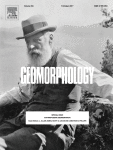 CHEN, MOSSA, WU – Anthropogenic landforms and sediments from dredging and disposing sand along the Apalachicola River and its floodplain
CHEN, MOSSA, WU – Anthropogenic landforms and sediments from dredging and disposing sand along the Apalachicola River and its floodplain
Joann Mossa, Yin-Hsuen Chen, Scott P. Walls, G. Mathias Kondolf, Chia-Yu Wu
Article first published online: 12 MAR 2017 Geomorphology
DOI: 10.1016/j.geomorph.2017.03.010
ABSTRACT: The Apalachicola River, which begins at the confluence of the Chattahoochee and Flint rivers near the Georgia-Florida State line, has multiple human impacts. Water inputs declined due to upstream irrigation and urbanization in Georgia. Sediment trapped by numerous small to large dams, including construction of Jim Woodruff Dam in 1954 near the Apalachicola-Chattahoochee-Flint (ACF) confluence has increased degradation. Shortly thereafter, the river was modified for a navigation project, with 29.6 × 106 m3 dredged between 1957 and 2002 from the Apalachicola alone. This study investigates how historic dredging coincides with the modern morphology of the channel and how historic dredging, disposal, and other activities have modified the floodplain landforms and sediments. This analysis of the navigation impacts in the middle Apalachicola River (River Miles 40 to 65) ties spatial and temporal variations of dredging, field-derived bathymetry, historic maps, patterns of floodplain disposal of dredge spoil from LiDAR imagery, and modern point bar channel change of the Apalachicola River. Floodplain mounds of coarse material, built from out-of-bank disposal constitute > 800,000 m3 in the study area. Approximately 7.7 × 106 m3 of sediment was dredged within the study reach, roughly 11% of the volume dredged remains on the floodplain. Sand bars were disposal sites thus their increased area of 263% is partly tied to this practice. Thus, the legacy of dredging affects the modern sedimentology and morphology of the floodplain and channel. Findings show that a failed navigation project could have been pre-empted with better geomorphic, geologic and hydrologic study and suggest that vegetative restoration of point bars would help in narrowing and stabilizing this dynamic system.
Read the full publication at Geomorphology